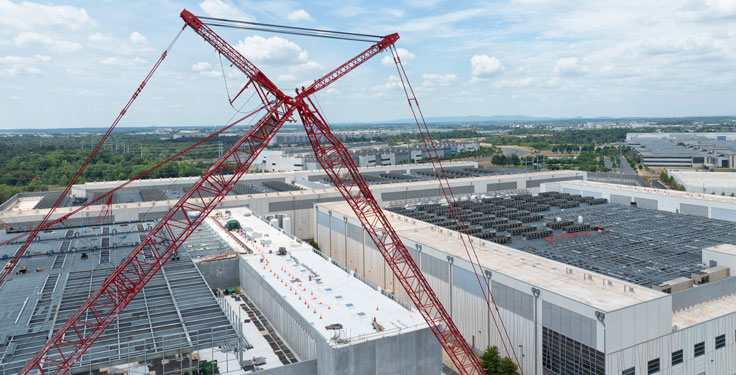Construction was resilient through COVID, and it has performed nicely in the post-COVID world to fuel demand for materials producers.
Several factors are likely to shape 2025 for the industry – including interest rates, inflation, the workforce and November’s elections.
Interest rates and inflation
The Federal Reserve earlier this year dropped the federal funds rate 50 basis points from 5.5 percent to 5 percent.
This was the first decrease in interest rates since March 2020, when the rate decreased to 0.25 percent. Starting in March 2022, rates increased steadily to combat inflation, peaking in July 2023 at 5.5 percent. The rate remained there until September of this year.

The recent cut is likely to be the first of more to come, according to Dodge Construction Network’s Richard Branch.
“I think in December [the Fed will cut] 25 basis points, and I think they continue to cut [rates] throughout the course of 2025,” says Branch, who serves Dodge as chief economist. “Our forecast has a 25-basis point rate cut in each quarter throughout 2025.”
Additionally, the inflation rate in late October was at 2.4 percent. That mark is down from the 10-year high of 9.1 percent in June 2022.
“[Inflation] is still above [the Fed’s] target rate of 2 percent, so they don’t want to be overly aggressive with rate cuts and fear restoking inflation,” Branch says. “Nor is the labor market collapsing and cracking. So, there is no need to cut rates quickly. Between now and the end of next year, we’re looking at about 150 basis points lower interest rates. That’s pretty significant.”
The workforce

While construction firms have made gains in hiring, recent reports show a shortage of skilled labor remains.
“According to the Job Openings & Labor Turnover Survey issued by the U.S. Bureau of Labor Statistics, there has been a pretty sharp decrease in job openings for the construction industry,” says Zack Fritz, economist at the Associated Builders & Contractors. “At the same time, there is not a lot of labor out there but demand for labor has subsided a little.”
As of September, the U.S. construction unemployment rate was at 3.7 percent – just above the August mark of 3.2 percent, which matched a record low. Unfortunately, experience among potential job candidates is an issue.
“To be a craft worker in construction, you generally need to have experience and credentials in the construction field,” says Ken Simonson, chief economist at the Associated General Contractors of America. “This is a chronic problem overall. An even higher percentage [of contractors] than last year said they were having difficulty filling positions. I think it will continue to be a problem.”
The election

2025 will also bring an administration change to the White House that will surely affect the industry.
“Both [Kamala] Harris and [Donald] Trump like the idea of more tariffs and more protection for U.S. producers,” Simonson says. “This will be a challenge for contractors to acquire materials at an affordable price.
“Other things that would be very different under Trump or Harris: a lot of the regulatory stuff,” Simonson adds. “This isn’t new. We’ve seen the pendulum swing between Republican administrations and Democratic administrations for two decades on things like land-use regulations, Waters of the U.S., clean air regulations, wage and hour, and safety rules. All would be quite different.”
Still, the impact on the industry might come down to how another government branch is structured.
“A lot also depends on who controls Congress,” Simonson says. “I don’t think we’ll see most of the IIJA (Infrastructure Investment & Jobs Act) money rolled back. Even the most conservative-speaking Republican members of Congress like to attend ribbon cuttings in their districts.
“Some of the renewables, the electric vehicle support – maybe that’s at risk,” Simonson adds. “But most of that federal money or tax credits are going to stay in place.”
Related: Drilling Deeper Episode 24: Industry economists offer short-term outlook












